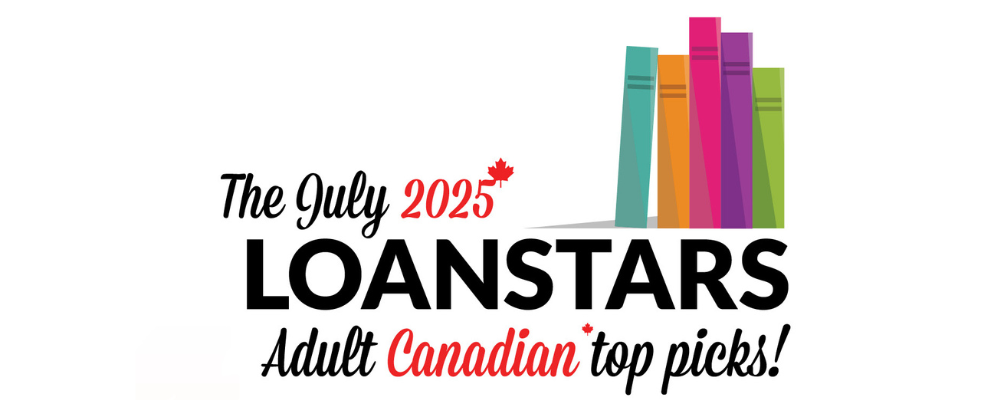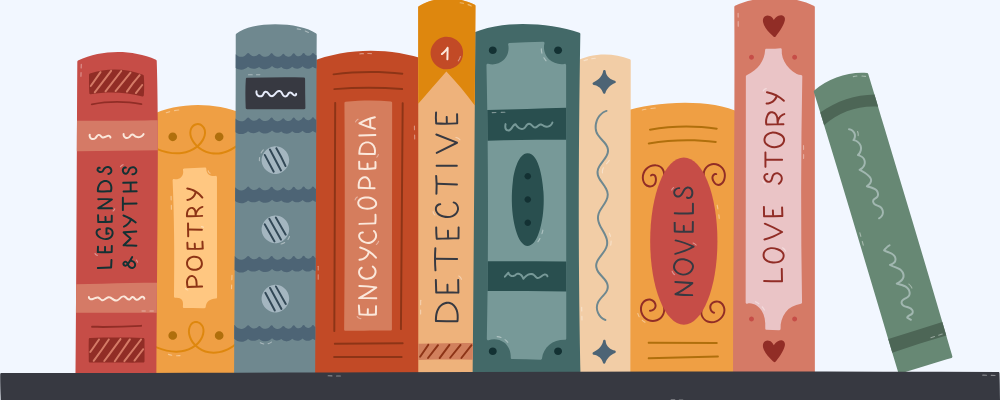Luciana Erregue (she/her) is a Canadian-Argentinian writer and publisher from Amiskwaciwâskahikan (ᐊᒥᐢᑲᐧᒋᐋᐧᐢᑲᐦᐃᑲᐣ ). Her imprint Laberinto Press (BPAA 2022 Emerging Publisher of the Year) produces hyphenated Canadian literature and global literature in translation. Luciana loves walking everywhere, especially the Edmonton River Valley.
At the end of February, Jazz Cook and Dani MacDonald from the Association of Canadian Publishers and I shared the results of the 2022 Diversity Baseline Survey in a Tech Forum panel moderated by Lauren Stewart from BookNet Canada. At the request of BookNet, I am providing a brief document on the concrete ways heads of firms big and small can contribute to moving the dial towards the increasing diversification and inclusion of the publishing industry with consistency and self-motivation. It starts with consistent self-reflection. It continues with self-evaluation and collective accountability. I believe that working productively on equity, diversity, and inclusion (EDI) initiatives at the micro level could yield the same benefits of metadata compliance.
In addition to being a BIPOC publisher, I am a multilingual author. As I am about to launch my first chapbook, I feel a mix of emotions. It is simultaneously joyful and nerve-wracking. Those of us who write between two cultures always get asked "Who is your audience?" Sometimes this elicits a defensive answer, assuming nobody would want to read our stories, but I am starting to see that for the most part, the question opens a window where we see words for what they can be, a site, a place in lieu of geography, where we can find each other. The same goes for writing this piece. Who is my audience? I will try to elucidate this by first providing some background information on how the 2022 Baseline Survey came to be.
EDI initiatives in the Canadian publishing industry by the numbers
In 2018, the Diversity and Inclusion working group decided to administer a baseline survey to gather information on the composition of Canadian publishing workplaces, identifying challenges and opportunities with respect to building diverse and inclusive workplaces.
The working group recommended the survey be repeated in 3 to 5 years, which brings us to today.
The online survey was open between July 5, 2022, and September 16, 2022, and received a total of 439 responses. The results showed an industry with an undeniable diversity problem:
82% of respondents identified as white;
72% were straight;
74% were women; and
80% were non-disabled.
When heads of firms were asked if they had plans for any new initiatives to support diversity, equity, and inclusion, close to half answered no — and many shared that although they already had EDI policies in place, it was still challenging to move the dial in practice.
The survey was anonymous and self-reported. Participation was voluntary and all questions were optional. Heads of firm (or equivalent) were asked an additional set of questions about their companies in addition to the survey questions that captured demographic information. Of the 439 responses, 87 identified themselves as heads of firm. Today, I am thrilled to address all 87 of you directly.
When I refer to EDI in general, I include a wide swath of intersectionality, including race, class, and gender. We could approach these recommendations two ways, one, as a problem to solve, where we can look at the Baseline Survey for answers. The other way, since we are publishing professionals, is through storytelling. After all, stories are the building blocks of our business.
EDI initiatives in the Canadian publishing industry: Story time
During the closing remarks at the online Tech Forum panel on the Baseline Survey, I noticed that the last slide of the presentation had a testimony from a staff member working in design at a publishing firm. They felt that the load of the EDI work fell on the shoulders of staff already part of the demographic in need of EDI initiatives themselves. I am trying very hard to have the right vocabulary to even attempt to introduce the topic. In the back of my mind, a version of writer Jenna Butler’s words resonate louder and louder, “I am aware of my responsibilities to my BIPOC community and in doing so I stand in harm’s way by being outspoken.” If we are going to speak of fragility, we need to acknowledge it permeates this conversation. Yes, the task of engaging in necessary diversity work falls, often, on those who are from BIPOC, LGBTQ2S+, and/or disability backgrounds, usually at the lower levels of an organization, and on their own time and initiative.
When discussing EDI in the context of storytelling, two tales come to mind. The first one, The Emperor’s New Clothes by Hans Christian Andersen, is based on a traditional folk-tale, which explores the idea of fraud and imposter syndrome. Sometimes we might feel not quite “authentic” in our EDI efforts, which is okay since it will lead to more questions within our organization. The other story that resonates with me when discussing EDI initiatives is Goldilocks, and its “too big, too little, or just right” theme. Like Goldilocks, we might find ourselves judging or questioning whether our EDI credentials or initiatives were all they were cracked up to be. Fear not; I wish for us to ask ourselves one basic question.
How do you or your organization “show up?”
There are two kinds of people, the ones that, no matter how many times they are invited, never show up, despite saying out loud “I will be there”, and those who, no matter what is going on, show up, even if they arrive late to the party looking like a mess, they are THERE! My first, very naive recommendation is Just. Show. Up. — especially if you say you are going to do so.
One of my favourite writers, Somerset Maugham said: “People ask you for criticism, but they only want praise.” Here comes my second recommendation, embrace both, hard. Just do it, imperfectly. There is no way to do everything perfectly, the pandemic has taught us that. Just as we embraced the charming expression “Goblin Mode”, we can also inch our way towards EDI initiatives imperfectly, by owning that, despite our efforts, things are less than ideal, or far from our goals. Also, we need to be less reactive if someone within our organization asks about where we are at with EDI initiatives. Any question leads to a conversation. Let's normalize talking about EDI initiatives by the water cooler.
A personal takeaway is to think of the idea of “nature versus nurture” where heads of firms who are not BIPOC, LGBTQ2S+ or disabled receive more training and get the opportunity to be mentored.
For BIPOC, LGBTQ2S, and disabled publishing industry professionals, our daily grind is embedded in diverse hiring practices, from being heads of firms to hiring designers and copy editors, authors, web developers, etc. But there are structural reasons why the dial does not move and we do not see diversity in the upper ranks of the industry. And here it is where this qualitative testimony might shed some light on this matter.
Despite being recognized by our peers at the provincial level and having a community of support and friendships, publishers like us, are still unable to benefit from EDI grant money because in the eyes of federal granting agencies we are “not large enough” in an arbitrary Goldilocks game of publishing. There are no surveys to access funding for EDI for BIPOC emerging publishers. Diversity work while BIPOC sometimes feels like one must pay dues and wait patiently as other under-served groups are invited to the table in the hopes one day our turn might come. It is also watching larger firms access grants that for us would mean the difference between staying in business or not. Can you imagine, an emerging BIPOC press being able to produce eight books a year instead of one? That is the critical difference between access to EDI government-funded initiatives and being kept out of the granting system. “When will it be our turn?” we ask ourselves.
I feel that crafting a list of recommendations, or practical steps is part of the hard labour demanded from BIPOC people that never gets reciprocated. It repeats the colonial violence of resource extraction. I am useful because of my difference, and yet, I remain in the same place. So that we can advance together, instead of direct recommendations, I have decided it is best to provide a self-assessment questionnaire for non-equity-seeking heads of firms. I am providing this out of genuine curiosity because if I were in your place, I would surely see challenges I do not see on my end because by being BIPOC myself, I am surrounded by BIPOC talent and as I have stated earlier, I am embedding BIPOC and EDI daily in my practice. This is a path that heads of firms must walk individually, armed with sincerity about their intentions, and accountability to other fellow equity-seeking publishers, staff, writers, and themselves.
Organizations will thrive if we start just with one sincere step. Sincerity is key. I really want you to imagine these questions as part of a one-on-one dialogue where I would be able to ask you, a non-equity-seeking head of firm, how have you navigated an industry that within its business challenges, has always worked in your favour? What tips would you have for me and other BIPOC workers to thrive in the Canadian publishing industry, other than “offer something of value,” “do not talk about yourself,” and “wait to be discovered”? All very candid advice I have received from a couple of well-intentioned non-BIPOC publishing professionals who shall remain nameless.
EDI initiatives, a self-assessment guide
There is so much I do not know about how to navigate this largely White industry that I feel vulnerable just asking these questions as a way into dialogue with the rest of you who are reading this from a screen. However, they have been burning bright in my mind.
As a head of firm, what have been the biggest challenges in attempting to enact EDI policies? (Some of the answers are in the survey, but it is worth asking yourselves this once a month.)
How did you use to respond and how do you respond now when a BIPOC staff asks about anti-racism action and accountability?
Who surrounds you in your work environment, at staff meetings? How does it reflect and support your EDI policies?
When hiring freelancers or permanent staff, how do you evaluate their “fit” within the company?
What are your thoughts on the body of research that supports the idea that we like people who are similar to us?
What do you (consciously or unconsciously) demand of your equity-seeking staff that you do not demand of your non-equity-seeking staff and vice-versa?
Have you examined your biases?
What gaps do you notice? How are you educating yourself about those? (I am learning a lot about metadata, and the business side of the industry, for example. Studying and following through on EDI initiatives could become as standard as working on your metadata.)
How do you prioritize your EDI policies? From the outside in, by publishing diverse authors, or from the inside out? Do you outsource EDI initiatives?
What are your biggest fears/anxieties, if any, in terms of EDI recruitment/implementing EDI policies?
How thoroughly do you follow up on EDI initiatives in your company?
How do you as a non-equity-seeking head of firm hold yourself accountable for enacting EDI policies?
Have you ever paid lip service only to EDI initiatives? How? Could you compile your own list?
Some of the survey respondents argued that there was not enough funding allocated for EDI initiatives. Do you really think it is a question of money or more a question of really wanting to put in the work to look at the industry through a different lens? (If the answer is the latter, I can provide individualized advice.)
How beneficial is the status quo to your organization and how much money would you lose if you implemented EDI initiatives?
If there was no specific funding for EDI initiatives, how would you or would you still support EDI hiring policies and diverse authors?
Are these questions making you feel very uncomfortable, dismissive, or upset, at the BIPOC person asking them?
To conclude I would like to paraphrase fellow Alberta magazine publisher, multilingual poet Adriana Onita. Her dream is to never be asked who her audience is, or who she publishes for. Adriana instead asks from her prospective readers (publishers and audience members alike) to “take ownership” of the labour “to understand languages that are not English,”[1] while considering second-language Canadian writers and publishers, as part of the literary Canadian landscape.
I hope this mix of hard data and storytelling serves to open dialogue within the industry, and most importantly within our own selves. May we be able to show up, imperfectly. We ultimately owe it to our readers.
[1] Onita, A. (2023, April). Every Publisher Should Be Multilingual. Westword Magazine, 3; 23.















5 questions with Brian Li, the President of Roots & Bridge.